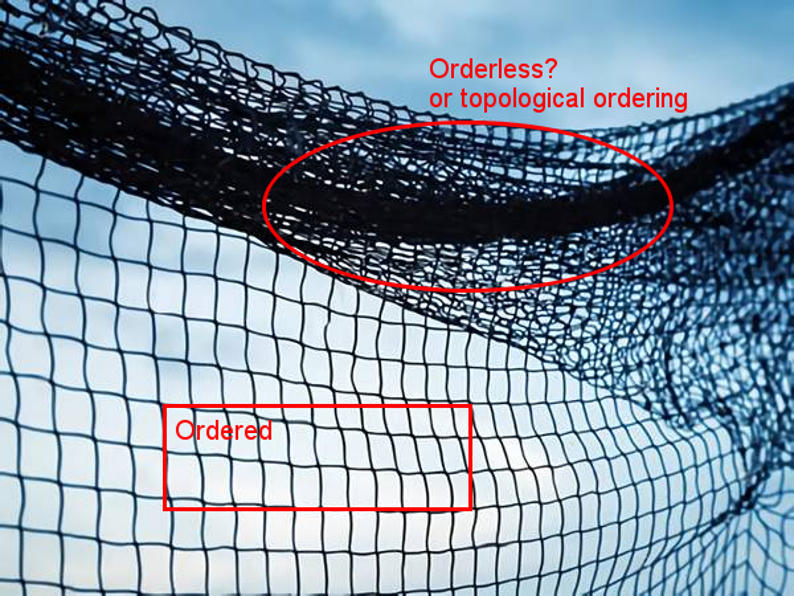Crystal-like glass under pressure - Dr. Qingyang Hu
APRIL 18, 2022
Glass is everwhere around our life, like glass cup, and it has been made since ancient times. However, we still know very little about its structure in-depth due to confined characterization techniques. By making glass using berlinite crystals as starting materials, the team co-led by Dr. Qingyang Hu from HPSTAR proposed that a remaining topological ordering origin of glass and demonstrated that such topological ordering might hide in many amorphous materials through disordered short atomic displacements. Their work is published in the recent issue of J. Am. Chem. Soc. (doi.org/10.1021/jacs.2c01717 (2022).
Glass was among the most expensive crafting materials before the invention of glassblowing technique. An ancient recipe of making glass is as simple as annealing a molten mixture of silica sand and chemicals in the right portion. Made from crystal such as silica, the major difference between glass and crystal is the way of atoms packing together, or called ordering. Taking the example of quartz silica, its atoms are packed to occupy the corners of a honeycomb-like structure and is realized as hexagonal lattice by crystallographers. In general, atoms in crystals are packed by a unique ordering, while glass lacks such ordering.
ring in the short range, but such ordering is not periodic. Another good example is the pressure-to-make glass. By compressing silica or silica-like materials like berlinite hard enough, for instance above 200,000 atmospheres, they appear to be glass. This way of making glass require high pressure rather than heating.
“The pressure-to-make glass is not real glass, but kind of material in between crystal and glass.” said Sheng-cai Zhu, an associate professor of Sun-Yet Sen University and also an alumnus of the Center for High Pressure Science and Technology Advanced Research (HPSTAR). “We compress a piece of berlinite to make glass. After removing pressure, it reverts to the crystal berlinite. This memory effect is triggered by the hidden topological ordering in berlinite.” added Qingyang Hu, staff scientist at HPSTAR.

Caption: Topological ordering in a fishing net.
In fact, the memory effect of berlinite has been observed by Kruger and Jeanloz in 1990, but its origin is still an arguable topic. The topological ordering is more resilient than the aforementioned crystal ordering. Similar to fishing net, you may fold, stretch or distort a fishing net such that it likes a muddle. But it is always possible to recover it through unfolding or withdrawing the force, unless the net was broken up or cut a hole (See the Figure). The mesh of the fishing net is like the topological ordering that maintains its shape. “I’ve been studying pressure-to-make glass since my Ph.D., and till now we can describe it in detail. From quartz, coesite to quartz-alike berlinite, the topological ordering may exist in many known ‘glassy’ materials.” said Qingyang. In fact, pressure-to-make glass are better regarded as bad crystals. Unlike perfect crystals, such ordering is propagated along specific directions. Observing from other directions may only see glass-like structural features.
“We employ a high-dimensional neuro-network energy potential to represent the structures of berlinite under pressure. The potential acquires enough accuracy from machine-learning and is also computationally affordable. We’ve searched hundreds of thousands of structures to cover every possible structural change of berlinite under pressure.” said Dr. Zhu. After collecting those structures, they construct a full potential energy surface. It is then possible to trace the motion of atoms in berlinite through the established topological relation. The same technique can be introduced to a wide range of systems.
The findings may bring up some interesting perspectives in describing glass. Pioneers have found hints of orderings in glass, but they are limited to relatively short length scales, e.g. the size of cluster of atoms at the longest. The topological ordering can be regarded as long-range ordering, which extends to the bulk material. By identifying long-range ordering in glass, scientists may further reveal the enigma of glass formation and explain how atoms are bonded together in nature.
The collaborative research team also include HPSTAR’s Ho-kwang Mao, Liang Xu; Dr. Zhipan Liu from Fudan University; Dr. Dongzhou Zhang from University of Hawai’i at Manoa and Mr. Gu-wen Chen from Sun-Yet Sen University.
非晶体在几个埃到几纳米的中短程距离可能具有有序性,但是非晶体是否存在长程有序性依然成疑。非晶体不应具备晶体这样的周期性;而实验探测手段,如使用结构因子和径向分布函数是无法分辨细微的长程有序性的,因此长久认为非晶体不存在长程有序。该工作研究了柏林石(AlPO4)在高压下的压致非晶化相变和记忆效应。实验表明非晶化后的柏林石产生的结构记忆,是源于内部存在一种深层次的长程有序结构。通过基于机器学习的神经网络势能,研究者构建了柏林石在高压下的势能面。在势能面上能够清晰地发现形成非晶化的低对称性结构群组,这些结构具有较低的相变能垒并失去所有对称性,即便如此,它们依然与柏林石存在紧密的拓扑关系。在压力作用下柏林石能够转变到这些低对称性中间态,通过计算这些中间态的结构因子和径向分布函数,发现它们的主要特征与非晶态一致,但保留了原子相互对应的拓扑关系。撤去压力之后,它们会通过这种拓朴有序性恢复回柏林石的晶体结构。这一机制可能普遍存在于出现压致相变的材料中。文章的通讯作者为高压中心校友、现任中山大学材料学院朱升财副教授,与高压中心的胡清扬研究员。此工作得到了国家自然科学基金,院创新发展基金和腾讯基金会的支持。
